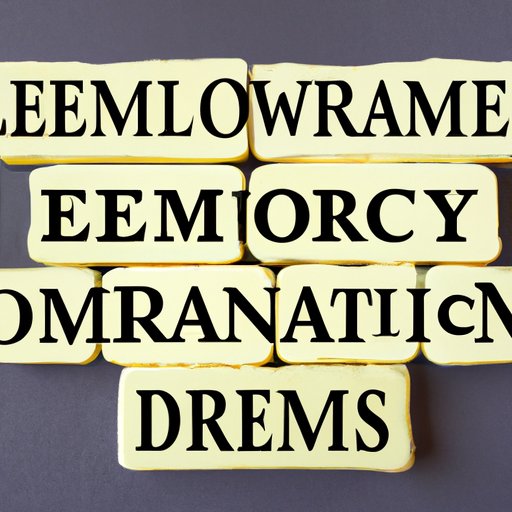Introduction
Emotional distress is a term often heard in legal contexts, but many people are unsure of how it works and whether they can sue for it. This article will explore the topic of emotional distress lawsuits, including what they are, how you can file one, and what the consequences are. Whether you’re facing emotional distress or concerned about the possibility of being sued, understanding these laws is essential.
Explanation of Emotional Distress Lawsuits
Emotional distress lawsuits, also known as ‘negligent infliction of emotional distress’ claims, are a type of lawsuit in which someone sues another party for causing them emotional harm. The harm can be caused by intentional actions or negligence, and might arise from a wide range of situations, from workplace bullying to medical malpractice to car accidents.
Importance of Understanding Emotional Distress Lawsuits
Emotional distress lawsuits can be incredibly complex and emotionally draining. They can also have a significant financial impact, both for the person bringing the suit and the defendant. For these reasons, it’s important to get a good understanding of how these lawsuits work before attempting to file one or defend against one.
Preview of Topics Covered
In this article, we’ll begin by defining emotional distress and discussing the different types of emotional distress claims that can be brought. We’ll then explore the legality of emotional distress claims, including the role of free speech and limits on this right. We’ll also look at some case studies that illustrate these concepts.
Next, we’ll guide readers through the process of pursuing emotional distress damages, from choosing the right lawyer to gathering evidence and building a case. We’ll then examine some recent cases and analyze how the courts have interpreted emotional distress claims. Finally, we’ll discuss the impact of emotional distress lawsuits on individuals and society, including some criticisms of these types of suits.

Navigating Emotional Distress Lawsuits: Understanding Your Rights and Options
Definition of Emotional Distress
Emotional distress typically refers to a severe and prolonged mental or emotional reaction to an event. It can manifest in many ways, including anxiety, depression, nightmares, and physical symptoms like headaches or nausea. A person might experience emotional distress in response to a traumatic event, such as an accident or natural disaster, or it might be caused by ongoing stress, harassment, or bullying.
Types of Emotional Distress Claims
There are several types of emotional distress claims that can be brought in court. These include intentional infliction of emotional distress (IIED), negligent infliction of emotional distress (NIED), and bystander emotional distress claims. IIED claims are brought when one person intentionally causes severe emotional distress to another. An NIED claim is filed when someone negligently causes another person to suffer emotional distress, while bystander claims arise when someone witnesses a traumatic event that causes them emotional harm.
What You Need to Prove in an Emotional Distress Lawsuit
In order to pursue an emotional distress lawsuit, you will need to prove several things. First, you will need to establish that you suffered genuine emotional distress. This may involve demonstrating that you have symptoms such as anxiety, depression, or sleep disturbances. You will also need to show that the distress was caused by the actions of another party, and that the actions were unreasonable (in the case of negligence) or intentional (in the case of IIED). Finally, you will need to demonstrate that you suffered damages as a result of the distress, such as medical expenses or lost wages.

When Words Hurt: Exploring the Legality of Emotional Distress Claims
The Role of Free Speech
One of the challenges in emotional distress lawsuits is the tension between the right to free speech and the right to sue for emotional harm. Generally, people are free to speak their minds, even if the things they say are hurtful or offensive. However, there are limits to this right, particularly when the speech causes harm to others.
The Limits of Free Speech
In the context of emotional distress lawsuits, there are several circumstances in which free speech protections may not apply. For example, if someone makes false and defamatory statements about another person, they may be liable for causing emotional distress. Similarly, if someone uses hate speech or other forms of speech that are likely to incite violence or harassment, they may be held responsible for the emotional distress that results.
Case Studies
The case of Snyder v. Phelps is a good example of the tensions between free speech and emotional distress lawsuits. In this case, the Westboro Baptist Church staged a protest at the funeral of a marine, carrying signs with homophobic messages. The marine’s father sued the church for emotional distress, but the case ultimately went to the Supreme Court, which ruled in favor of the church on First Amendment grounds.
Another example is the case of Elonis v. United States, in which a man was charged with making threatening statements about his ex-wife and others on Facebook. The man argued that his posts were protected by free speech, but the Supreme Court ultimately upheld his conviction, finding that the statements were threatening and therefore not protected.

From Trauma to Trial: The Process of Pursuing Emotional Distress Damages
Legal Requirements for a Lawsuit
Before pursuing an emotional distress lawsuit, it’s important to understand the legal requirements involved. For example, you will need to make sure that the statute of limitations has not passed (the time limit for filing a claim), and that you have a strong case with evidence to back up your claims. You will also need to determine what kind of damages you are seeking, such as medical expenses or lost wages.
Choosing the Right Lawyer
Emotional distress lawsuits are complex, so it’s important to choose a lawyer with experience in this area. Look for a lawyer who has successfully handled similar cases in the past, and who can offer insight into the best approach for your particular case. It’s also important to find a lawyer who you feel comfortable working with and who is willing to communicate with you regularly throughout the process.
Gathering Evidence
In order to succeed in an emotional distress lawsuit, you will need to provide evidence that supports your claims. This might include medical records, witness testimony, or police reports. Your lawyer can work with you to build a strong case, gathering the necessary evidence and presenting it in a way that is compelling to the court.
Building Your Case
The process of building an emotional distress case can be lengthy and complex, but your lawyer will be there to guide you every step of the way. They will advise you on the best legal strategy to pursue, and will work with you to present your case in the most effective way possible.
A Look at Recent Cases: How Courts Interpret Emotional Distress Claims
Overview of Recent Cases
There have been many emotional distress cases in recent years, and the rulings in these cases can offer valuable insight into how courts approach these types of lawsuits. Some recent cases have focused on issues such as online harassment and workplace discrimination.
Examples of Successful Claims
One recent example of a successful claim is the case of Reynolds v. Highland Hospital, in which a nurse filed suit against her employer for failing to protect her from an abusive patient. The nurse suffered emotional distress as a result of the patient’s behavior and ultimately received a settlement from the hospital.
Examples of Failed Claims
Not all emotional distress claims are successful, however. In the case of Dillon v. Legg, for example, the plaintiffs sued a driver who had caused a fatal accident for emotional distress. However, the court ultimately ruled that the plaintiffs were too far removed from the accident to recover damages for emotional distress.
The Impact of Emotional Distress Lawsuits: Examining the Effects on Individuals and Society
Individual Consequences
Emotional distress lawsuits can have significant consequences for individuals, both those who file the suits and those who are sued. For example, a person who files suit may have to go through a lengthy and emotionally draining legal process, and may be faced with consequences such as lost wages or difficulty finding a job in the future. The defendant, meanwhile, may have to pay significant damages or experience harm to their reputation as a result of the lawsuit.
Societal Consequences
From a societal perspective, emotional distress lawsuits can have a chilling effect on free speech, as people may be hesitant to speak their minds for fear of being sued. Some critics argue that these lawsuits are overused and unfairly burden businesses and individuals with unnecessary legal expenses. Others argue that these lawsuits are an important tool for holding people accountable for their actions and deterring harmful behavior.
Criticisms of Emotional Distress Lawsuits
There are many criticisms of emotional distress lawsuits, including the possibility of frivolous suits. Some argue that these types of lawsuits place an undue burden on the legal system and inflate the costs of doing business or engaging in everyday activities. Others argue that emotional distress claims are hard to prove and that they discourage people from taking responsibility for their own emotions.
Conclusion
Recap of the Importance of Understanding Your Rights and Options
Emotional distress lawsuits can be incredibly complex, emotionally taxing, and financially draining. However, they can also play an important role in helping people recover from traumatic events and hold others accountable for their actions. By understanding your rights and options, you can make informed decisions about whether to pursue a lawsuit and what legal strategy to take.
Call to Action
If you are facing emotional distress or believe that you have a legitimate claim, it’s important to speak with an experienced lawyer who can guide you through the process. Emotional distress lawsuits can be challenging, but with the right legal help, you can protect your rights and seek justice for the harm you have suffered.
